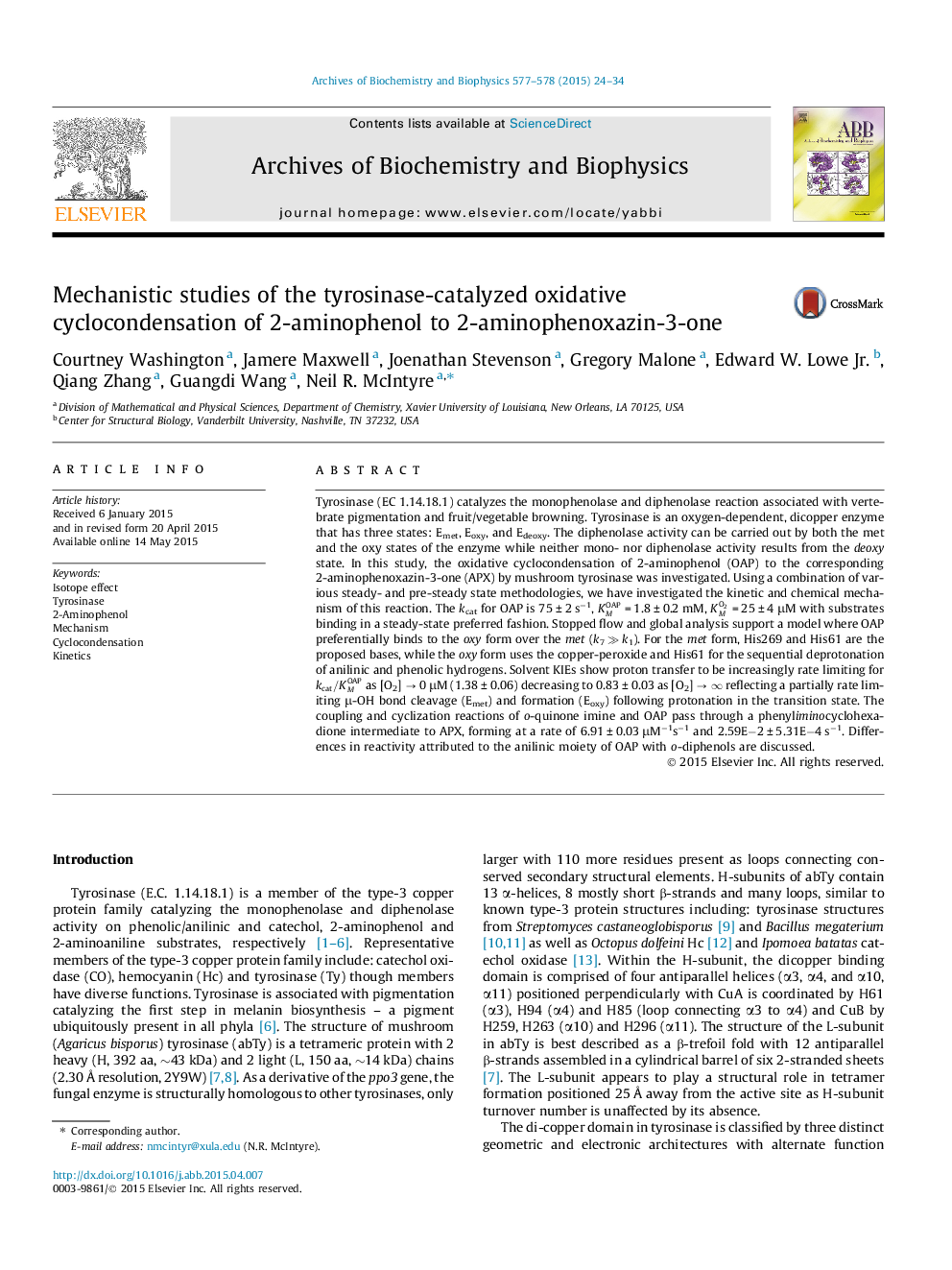| کد مقاله | کد نشریه | سال انتشار | مقاله انگلیسی | نسخه تمام متن |
|---|---|---|---|---|
| 1924918 | 1536325 | 2015 | 11 صفحه PDF | دانلود رایگان |
• Tyrosinase preferentially oxidizes 2-aminophenol (OAP) from the oxy-state.
• sKIE dependence on [O2] reflect rate limitation of μ-OH formation/consumption.
• Transient phenyliminocyclohexadione cyclooxidation intermediate detected.
Tyrosinase (EC 1.14.18.1) catalyzes the monophenolase and diphenolase reaction associated with vertebrate pigmentation and fruit/vegetable browning. Tyrosinase is an oxygen-dependent, dicopper enzyme that has three states: Emet, Eoxy, and Edeoxy. The diphenolase activity can be carried out by both the met and the oxy states of the enzyme while neither mono- nor diphenolase activity results from the deoxy state. In this study, the oxidative cyclocondensation of 2-aminophenol (OAP) to the corresponding 2-aminophenoxazin-3-one (APX) by mushroom tyrosinase was investigated. Using a combination of various steady- and pre-steady state methodologies, we have investigated the kinetic and chemical mechanism of this reaction. The kcat for OAP is 75 ± 2 s−1, KMOAP = 1.8 ± 0.2 mM, KMO2 = 25 ± 4 μM with substrates binding in a steady-state preferred fashion. Stopped flow and global analysis support a model where OAP preferentially binds to the oxy form over the met (k7 ≫ k1). For the met form, His269 and His61 are the proposed bases, while the oxy form uses the copper-peroxide and His61 for the sequential deprotonation of anilinic and phenolic hydrogens. Solvent KIEs show proton transfer to be increasingly rate limiting for kcat/KMOAP as [O2] → 0 μM (1.38 ± 0.06) decreasing to 0.83 ± 0.03 as [O2] → ∞ reflecting a partially rate limiting μ-OH bond cleavage (Emet) and formation (Eoxy) following protonation in the transition state. The coupling and cyclization reactions of o-quinone imine and OAP pass through a phenyliminocyclohexadione intermediate to APX, forming at a rate of 6.91 ± 0.03 μM−1s−1 and 2.59E−2 ± 5.31E−4 s−1. Differences in reactivity attributed to the anilinic moiety of OAP with o-diphenols are discussed.
Figure optionsDownload high-quality image (253 K)Download as PowerPoint slide
Journal: Archives of Biochemistry and Biophysics - Volumes 577–578, July 2015, Pages 24–34
